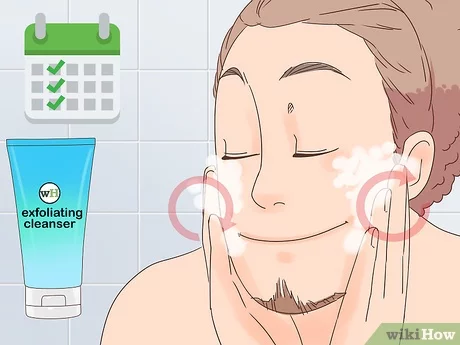
When the skin surrounding an ingrown hair is inflamed, it can cause an infection. If it is not treated promptly, it can even become infected. Symptoms of an ingrown problem include swelling, redness, itching, warmth, and pus. Treatment involves stopping shaving and applying a warm compress. If the ingrown hair is too painful, a sterile toothpick or needle can be used to release it. If the inflammation is mild, a topical cream or retinoid may be applied. If the inflammation is more severe, antibiotics or corticosteroids may be prescribed. When shaving is resumed, you should always follow proper techniques.
Ingrown hairs are caused by uneven hair removal. They can occur on legs, arms, underarms, bikini line, or bikini line. The area where you removed the hair is susceptible to ingrown hairs. If the procedure was done unevenly, the ingrown tip will emerge. The infected area will itch and swell, and it can be irritated by soap or other products.
While there is no cure for ingrown hairs, there are treatments that can help you manage and prevent them. Although some people are more prone to ingrown hairs than others, it is possible to manage their condition. By preventing and addressing the cause, you can avoid the painful and annoying condition. It is important to keep in mind that you cannot always avoid shaving and that shaving can trigger an ingrown. There are medications that can help you prevent ingrown hairs.
Fortunately, there are ways to manage and prevent ingrown hairs. However, some people are prone to the problem, and you should see a doctor if you are suffering from an ingrown hair. Whether you have it once or a hundred times, you will need to take steps to treat it as soon as possible. It may be necessary to see a doctor if it becomes infected.

Home treatments for ingrown hairs can be effective and affordable. Try exfoliating scrubs to remove dead skin cells and prevent ingrown hairs. You can also use sterile tweezers to remove the ingrown hair. After removing the ingrown and infected tissue, you can apply a sterile ointment. This may help reduce the inflammation. But do not forget that the process of treating an ingrown or infected hair is not as easy as simply peeling off the skin.
There are several ways to treat ingrown hairs at home. An exfoliating scrub will help lift ingrown hairs. This helps remove debris and dead skin cells that may be blocking the follicle. Using a sterile needle to scrape off an ingrown or infected hair tip can be dangerous because it can cause a secondary infection. Using sterile tweezers to remove ingrown hairs can be very uncomfortable and can even lead to permanent scarring.
Ingrown hairs are painful and annoying. Fortunately, they are easily treatable. The most important thing is to prevent their occurrence. You can try the same methods to stop infected hair before it appears. Just remember to be gentle with yourself. Avoid irritation and ingrown hairs that can cause pain. You don’t have to wait to be bald. Start applying these procedures immediately. You will find relief in no time.
Ingrown hairs are often not painful and go away on their own. If you notice that ingrown hairs are asymptomatic, they will disappear on their own in a few weeks or months. If they are large, they are usually painful and require medical attention. Dermatologists will prescribe topical antibiotics for treatment. If the infection is severe, they may refer you to a skin specialist or get a recommendation online CERA. They will diagnose ingrown hairs by examining the infected area and noting the distribution of skin lesions.
Ingrown hair is a common problem. If you have a problem, the best option is to see a dermatologist. A dermatologist can help you diagnose and treat it. If you are unsure of the cause, your doctor may treat ingrown hairs as long as they are not painful. They will then recommend medication to reduce the inflammation and ingrown hairs you have. Your doctor may prescribe a sterile solution for your condition.